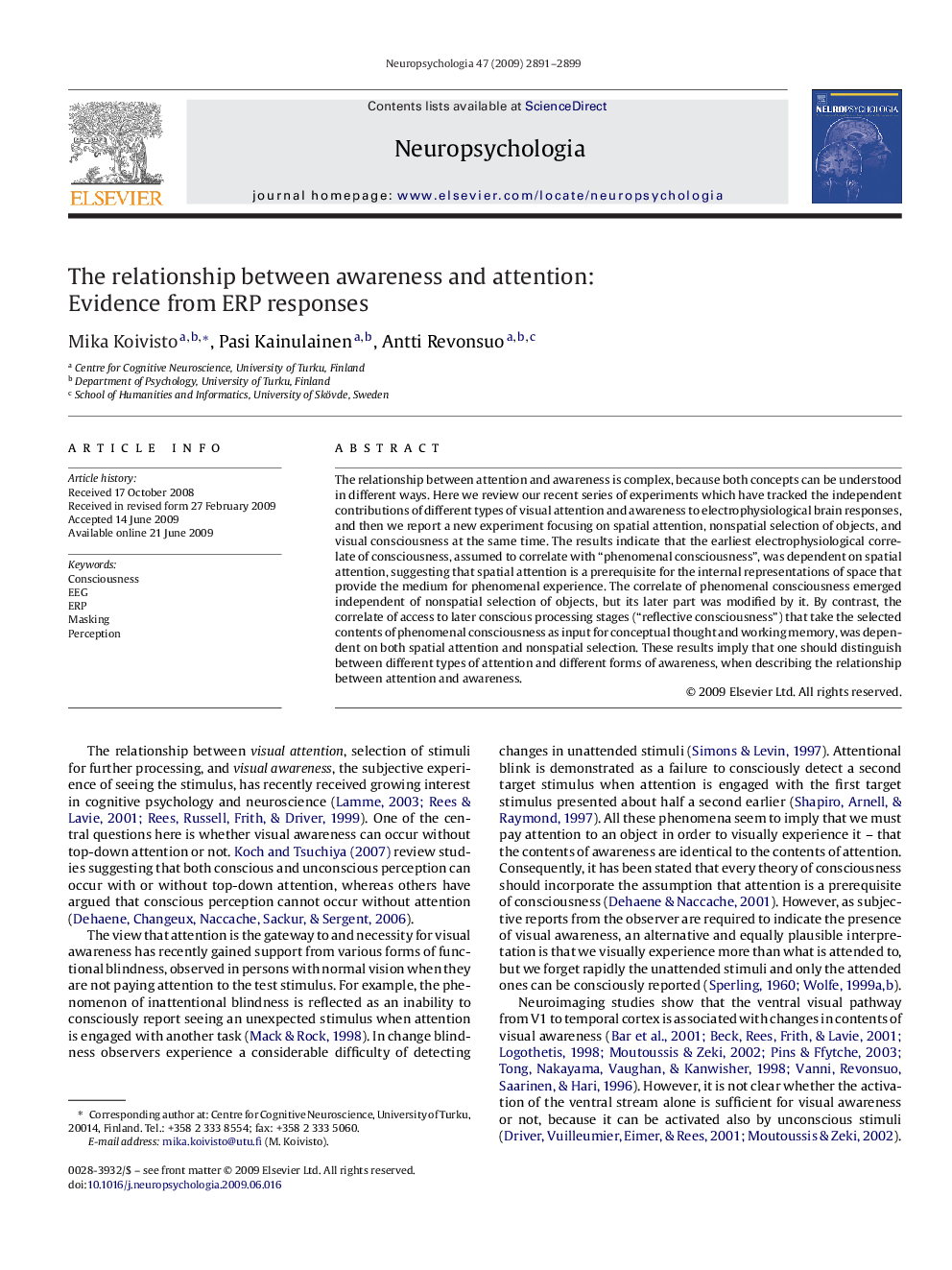| Article ID | Journal | Published Year | Pages | File Type |
|---|---|---|---|---|
| 10466283 | Neuropsychologia | 2009 | 9 Pages |
Abstract
The relationship between attention and awareness is complex, because both concepts can be understood in different ways. Here we review our recent series of experiments which have tracked the independent contributions of different types of visual attention and awareness to electrophysiological brain responses, and then we report a new experiment focusing on spatial attention, nonspatial selection of objects, and visual consciousness at the same time. The results indicate that the earliest electrophysiological correlate of consciousness, assumed to correlate with “phenomenal consciousness”, was dependent on spatial attention, suggesting that spatial attention is a prerequisite for the internal representations of space that provide the medium for phenomenal experience. The correlate of phenomenal consciousness emerged independent of nonspatial selection of objects, but its later part was modified by it. By contrast, the correlate of access to later conscious processing stages (“reflective consciousness”) that take the selected contents of phenomenal consciousness as input for conceptual thought and working memory, was dependent on both spatial attention and nonspatial selection. These results imply that one should distinguish between different types of attention and different forms of awareness, when describing the relationship between attention and awareness.
Keywords
Related Topics
Life Sciences
Neuroscience
Behavioral Neuroscience
Authors
Mika Koivisto, Pasi Kainulainen, Antti Revonsuo,
